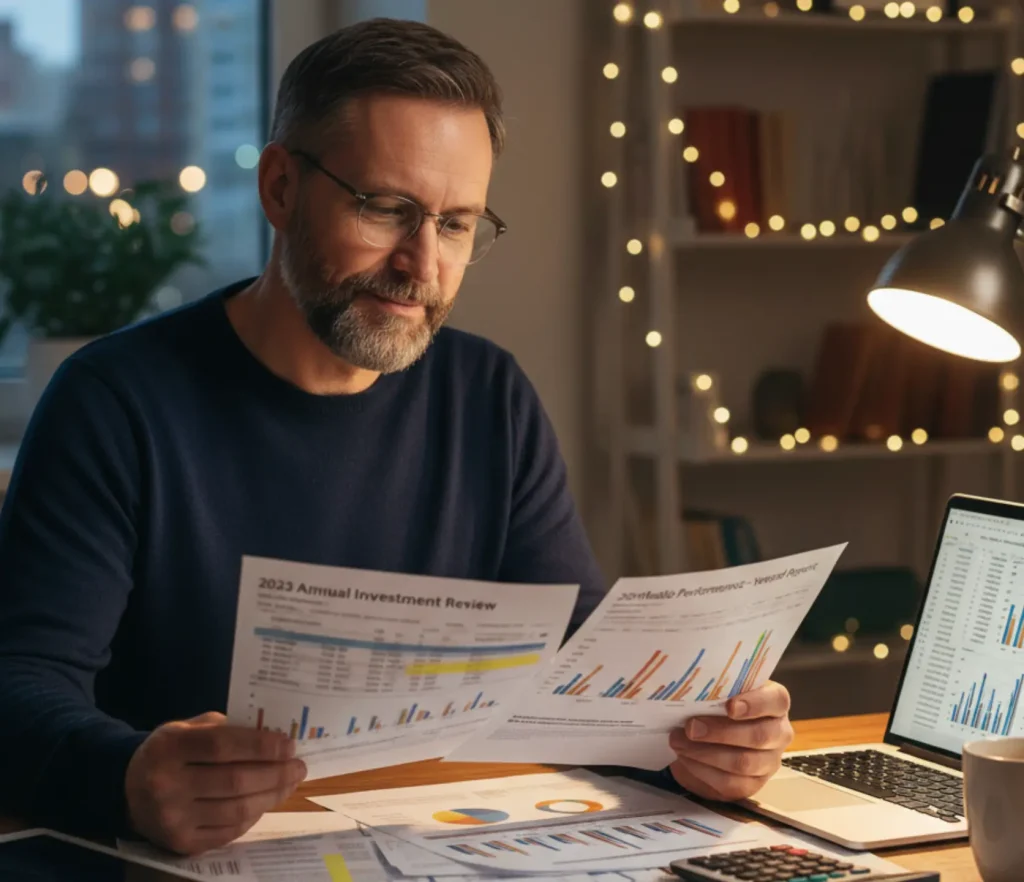Looking back is one of the most powerful ways to move forward.
Back in January 2025, I took time to review my results from 2024—an exercise I consider essential for any serious investor. Now, publishing this reflection in August, I can see even more clearly how valuable that process was.
Evaluating a year of investing and trading isn’t just about tallying profits or losses. It’s about understanding the reasoning behind decisions, identifying mistakes, and refining strategies for the future.
Here are the key lessons I outlined in January that remain just as relevant today.
The Right Questions to Ask Yourself
When reviewing my year, I don’t just look at numbers. I ask myself:
- Did I choose the right strategies for the market conditions?
- Did I allocate capital to the best available opportunities?
- Did my hedging and protective strategies work as expected?
- If I could go back, would I make different choices?
- Should I repeat these strategies—or adjust them going forward?
These questions help separate luck from skill. A winning trade isn’t automatically a smart trade, and a losing one isn’t always a mistake. The real test is whether the decision made sense given the information available at the time.
Avoiding Outcome Bias
One of the biggest pitfalls in investing is outcome bias—judging a decision solely by its result.
Take this example: if someone invested 100% of their capital in Bitcoin during a rally and it doubled, they might feel like a genius. But what if Bitcoin had dropped 75%? Would they still feel their decision was wise?
Good decisions are defined not by the outcome, but by the process and reasoning behind them. That’s why I measure success by the quality of my decision-making framework, not just the final profit or loss.
Stress Testing Risk
Another important part of my January review was evaluating risk exposure. I asked myself:
- What if the market had dropped 20%, 40%, or even 70%?
- Was I prepared for extreme volatility?
- Did I have a plan for both gains and losses?
By running these “what if” scenarios, I ensure my portfolio remains resilient. Risk management is not only about limiting downside—it’s also about building confidence to stay invested when markets get turbulent.
Learning from Mistakes
Mistakes are inevitable, especially for active investors. More trades mean more opportunities—not only for profit, but also for error.
Many mistakes come from emotions: fear, greed, impatience. That’s why I asked myself in January:
- Where did my emotions lead me astray?
- Did I stick to my plan, or did I deviate under pressure?
- How can I avoid repeating these mistakes?
By analyzing my errors, I strengthen my discipline and improve consistency—two traits every successful investor must develop.
Aligning Strategies with Goals
Beyond performance, I also reviewed how my strategies aligned with my long-term financial goals and emotional comfort level.
- Do my strategies match my risk tolerance and time horizon?
- How did I feel throughout the year—confident, anxious, or indifferent?
- Are my strategies strong enough to work in both bull and bear markets?
This self-awareness helps prevent impulsive decisions and ensures my portfolio reflects not just market conditions, but also my personal goals.
Preparing for the Future
My January reflection left me more prepared for 2025. By reviewing both my successes and my mistakes, I built a stronger foundation for the year ahead.
Looking back now, I can say: 2024 was a year of growth and learning. And with those insights, I entered 2025 with greater confidence, discipline, and adaptability.
The lesson remains timeless: reflection is not optional. It’s essential.

Related Reading
If you found this reflection useful, you may also enjoy:
- Hedge Fund Managers’ Pessimism vs. A Market Full of Opportunity – Why staying optimistic matters even when professionals are cautious.
- Fundamentals Matter—But So Does Price – How combining fundamentals with price action can improve investment decisions.
- Adaptability Has Always Been Key — But in an AI-Driven World, It Becomes Essential – Why flexibility is the ultimate investing skill in times of change.
Turning Insights into Repeatable Rules
Reflection only matters if it shapes what you do next. After my annual review, I convert observations into simple, testable rules for the coming year—things like maximum position size, a fixed hedge budget, and clear triggers for scaling in or out. I also set a review cadence (monthly and quarterly) to check whether I’m following the rules, not just whether I’m making money. This keeps me anchored to process quality, which is what ultimately compounds.
I also document a one-page “playbook update” summarizing what worked, what didn’t, and the two or three changes I’ll actually implement. No laundry lists—just focused improvements tied to evidence from my trades and notes.
By limiting changes and tracking them, I can see whether a tweak truly improved results or just added complexity. Over time, this discipline turns annual reflections into a steady edge: fewer unforced errors, better alignment with goals, and more confidence when markets get loud.
Final Thoughts
Whether you’re an experienced investor or just starting out, taking time to review your year is one of the most powerful ways to improve.
Ask yourself:
- Did you follow your plan?
- Did you manage risk effectively?
- Did you learn from both successes and mistakes?
The answers will shape your future performance.
What about you? Have you taken time to review your investing journey? Your next breakthrough might come not from a new strategy, but from a deeper reflection on the path you’ve already walked.
Disclaimer: This article is for informational and educational purposes only. It does not constitute financial, investment, or legal advice, and should not be taken as a recommendation to buy, sell, or hold any asset. Always conduct your own research and consult with a qualified professional before making any financial decisions. The author and publisher are not responsible for any actions taken based on the information provided in this content.
